Americans for the Arts is pleased to announce that ten projects have been selected as finalists for the Robert E. Gard Award, which honors projects from the last year that have integrated the arts into the community in meaningful, measurable ways. Members are invited to help select the winner by selecting up to three of their favorite projects.
Voting for 2018 closed in May 2018, but you can participate in the 2019 Gard Award process! Just click here to nominate a project! The 2018 winner was the Community Arts Training Institute in St. Louis, MO.
Below are this year’s submissions, please click the boxes to view a full-sized image as well as the project description and partners. Interested in seeing the 10 finalists from 2017? Click here!
Rhodes Skate Park
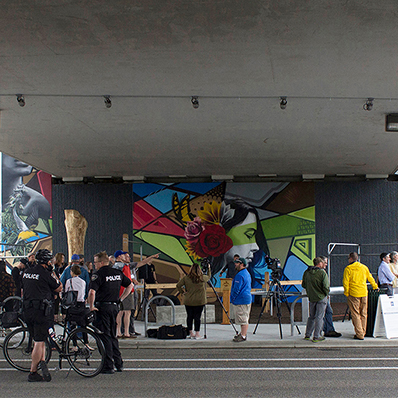
The Community Arts Training Institute

Project HEAL

Ready Go at People's Center Clinics & Services

Culture Blocks
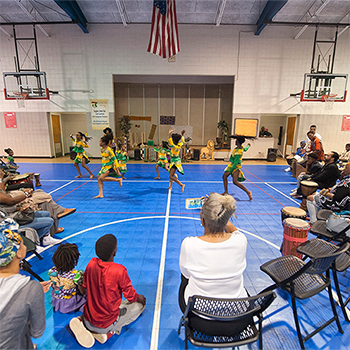
Wormfarm Institute-Farm/Art D'Tour

3Arts Residency Fellowships for Artists with Disabilities
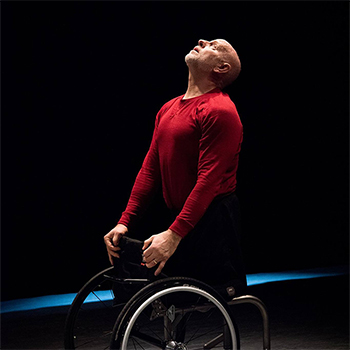
Culture Mapping 90404
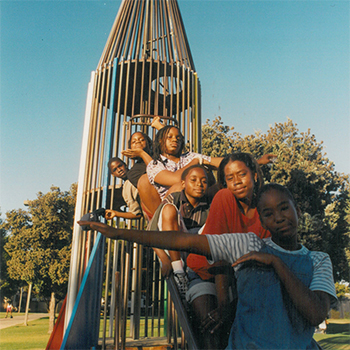
The St. Louis Map Room

THRIVE
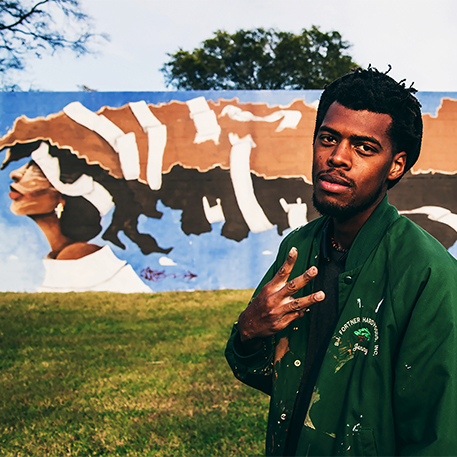
Voting is now closed, thank you!

Rhodes Skate Park Public Art Dedication. Photo Credit: Boise City Department of Arts & History
Rhodes Skate Park
With leadership from skate kids, a skateboarding association, city government officials, arts leaders, artists, and a family foundation, a freeway underpass was transformed into a state-of-the-art parkour and skate park full of meaning and beauty. Rhodes Park is a premier Northwest skateboarding destination with more than an acre of covered concrete skateable terrain and several highly visible, site-integrated public art projects. It’s the only parkour course in the state. Designed by world-renowned Grindline Skateparks, the skate park provides a place for Treasure Valley children, teens, and families of all skating abilities to learn, create, challenge and socialize. The artist design team was made up of local skaters turned muralists, Boise artist-based fabricators, and a Seattle artist with previous experience in skate parks. The J.A. and Kathryn Albertson Family Foundation, alongside the Boise Skateboard Association and the City of Boise, funded and facilitated the community collaboration and partnership. Rhodes Skate Park originated in 1995, led by a local citizen, Glenn Rhodes, who came up with the idea for a multiple-use skatepark after hearing about business owners running off skateboarders from downtown areas. He talked to his neighbor, 16-year-old Tim Shandro, who took him to skate spots and showed him what skateboarders like. And he talked to other kids, who told him "there was no place to skate." He found this unused spot and partnered with the City of Boise and Idaho Transportation Department to get the 1.28 park site, located between 15th and 16th streets under the I-184 connector, started. The 2017 makeover of this park took this idea of community partnerships and making a vibrant place for area youth to a whole new level, bringing in a world-class skater to design the park in collaboration with local youth; a team of public artists to design murals, markers, and fences; and hundreds of contractors, individuals, civic groups, and business to help fund and fabricate the park, which is managed by the City of Boise. The result is a landmark to active youth that fosters healthy, free engagement for all and an inter-generational gathering spot.
Partners: Lead Partner: City of Boise. Partners: Karl LeClair, Public Arts Manager, City of Boise; Toby Norton, Parks & Recreation Designer, City of Boise; Terri Schorzman, Director, Department of Arts & History, City of Boise; Doug Halloway, Director, Parks & Recreation Department; Rober Quarles, Executive Director, J.A. and Kathryn Albertson Family Foundation; Lori Wright, Board of Directors, Boise Skateboard Association; Sector Seventeen, Mural Artists; Stephanie Inman, Public Artist; Perri Howard, Public Artist; Trademark Designs, Public Artist/fabricators.

The 2017 Community Arts Training (CAT) Institute class in The Ville/Greater Ville Neighborhoods celebrates the start of their program.
The Community Arts Training Institute
For 21 years, the Regional Arts Commission of St. Louis (RAC) has implemented the Community Arts Training Institute (CAT Institute) to develop a robust regional network of community leaders and artists trained to use the arts as a tool for social change. Today, a cohort of more than 350 social workers, educators, community activists, policy-makers, and artists of all disciplines have completed the cross-sector, five-month curriculum and are putting their learning to use. The CAT Institute is unique in that its impact is measured not by what one singular program can do, but by the collective good that happens when hundreds of people share the values of art and social change and deploy their skills for change. The CAT Institute is the oldest sustained training program of its kind and RAC is humbled to know it is a model for similar programs across the country.The CAT Institute has for years trained artists in St. Louis on activism and social justice. To better identify well-defined and measurable outcomes in the field of art and social change, the Regional Arts Council of St. Louis commissioned an evaluator to study the program, define the “CAT Way of Working,” and identify how it empowers alumni to make a difference. The results of this study suggest multiple ways that CAT Institute training is manifested in the lives of graduates: among them a greater appreciation and respect for diversity, the adoption of a “with - not for” approach to community engagement. The same study revealed that 74% of respondents directly attribute their work success to CAT Institute training and cited concrete examples as evidence. The examples included successful projects that increase participant access to the arts, advance 21st century learning skills among youth, and promote life skills among other marginalized groups. Other examples of success are found within organizations where CAT Institute graduates work – from community development corporations to juvenile justice centers to museums and theatres. A rich web of connections exists among CAT Institute alumni, spanning the entire St. Louis region and growing exponentially with each class.
Partners: Lead Partner: Regional Arts Commission of St. Louis. Partners: CAT Institute Faculty: Renee Franklin, Director, St. Louis Art Museum; Kathryn Bentley, Actor, Teaching Artist, and Assoc Professor at Southern Illinois University – Edwardsville; Stefani Weeden-Smith, Asst Dir for Campus and Community Partnerships, Gephardt Institute for Civic and Community Engagement, Washington University - St. Louis; Shelly Goebl-Parker, Art Therapist and Program Dir/Assoc Prof of Art Therapy Counseling Program at Southern Illinois University – Edwardsville; Sue Greenberg, Exec Director, Volunteer Lawyers and Accountants for the Arts; Bill Cleveland, Director, The Center for the Study of Art and Community. Lab Team Advisors: Claire Wolff, Community Development Specialist at University of Missouri Extension; Amanda Colon-Smith, Exec Director, Dutchtown South Community Development Corporation; Dannie Boyd, Writer and Photographer; Sukanya Mani, Art Specialist at Chesterfield Parks, Recreation and Arts Department; Jessica Eiland, Project Manager, Rise Community Development Corporation; Jacqueline Thompson, Asst Professor of Theater at University of Missouri St. Louis; Dionne Ferguson, Founder and Exec Director at Good Journey Development Foundation; Kaveh Razani, Local Business Owner; Dail Chambers, Artist, Activist, Founder of Yeyo Arts Collective. CAT Institute Faculty – Neighborhood-based: Robert Ketchens, Visual Artist, Teaching Artist; William Burton, Visual Artist; Regina Martinez, Community Impact Artist, Organizer of The Pink House; Dail Chambers, Artist, Activist, Founder of Yeyo Arts Collective; Kaveh Razani, Local Business Owner; Con Christeson, Artist, Educator, Community Arts Practitioner; Emily Hemeyer, Teaching Artist, Founder/Director at SPORE Projects; Jennifer Callen, Community Arts and Movement Project (CAMP); Bryan Walsh, Screwed Arts Collective, 9th Ward Committeeman; Julia Allen, Neighborhood Organizer, The Ville Neighborhood; Thomasina Clarke, Neighborhood Organizer, The Ville Neighborhood. Presenters: Tabari Coleman, Education Director, Anti-Defamation League; Kaytlin Reedy-Rogier, Program Coordinator, Integrated Health Network; Stephanie Gutierrez, Co-Founder, Hope Nation Consulting; Con Christeson, Artist, Educator, Community Arts Practitioner; Sarah Paulsen, Animator, Visual Artist, Teaching Artist; David A. N. Jackson, Soundscape Artist; Joan Suarez, Community Organizer, Director of Bread & Roses Missouri; Ed Reggi, Actor, Television Host, Storyteller, Teaching Artist; Prison Performing Arts Alumni Theater Company; Rachel Tibbetts, Slightly Askew Theatre Ensemble (SATE); Jason Vasser, Poet, Program Specialist at Missouri Arts Council; Robert Ketchens, Visual Artist, Teaching Artist; Antionette Carroll, Creative Reaction Lab; Leslie Scheuler, Researcher, President of LS Associates; Liz Kramer, Asst Director at the Office for Socially Engaged Practice at Washington University in St. Louis. CAT Institute Funders and Organizational Partners: Creating Whole Communities / Community Builders Network of Metropolitan St. Louis; The US Department of Arts and Culture; The Center for the Study of Art and Community; National Endowment for the Arts; Kresge Foundation; Gephardt Institute for Civic and Community Engagement, Washington University; Brown School of Social Work, Washington University in St. Louis; Sam Fox School of Design and Architecture; Northside Community Housing.
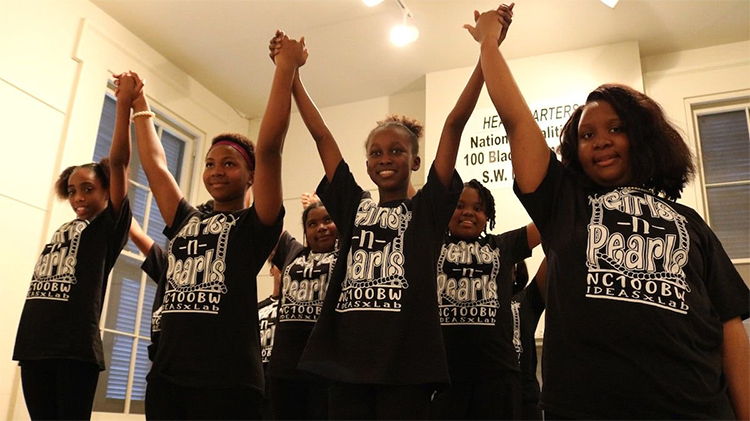
Photo Credit: Josh Miller, IDEAS xLab
Project HEAL
Policy is an imagining of the future. This is one of the core domains of all artists and an activity that is fundamentally cultural. To be sustainable, health and community development policies must find ways to become embedded in local cultures (Hangzhou International Congress on Culture and Sustainable Development, 2013). Project HEAL deploys a culturally-activated, social-lab process that uses various types of humanities-based approaches, artistic expression, media, and other strategies to explore both symptoms and root causes of local health challenges, identify leverage points, and create actionable policy initiatives and sustainable community center development strategies that positively impact health and wellbeing. Project HEAL (Health. Equity. Art. Learning.) is a convergence of culture, community, and science that introduces arts and culture as the key drivers for learning, action and evaluation by communities seeking to improve wellbeing. Developed by a team of artists, curators, community activists, social innovators, health professionals and scientists, Project HEAL brings together people, research, tools and resources of three sectors: Arts/Culture; Community/Development; and Health/Information Sciences in a replicable, scalable, evidence-informed approach that engages businesses, government, organizations, entrepreneurs, and researchers dedicated to a holistic approach to health and wellbeing. The project uses various types of humanities-based approaches, artistic expression, media, and other cultural strategies to explore both symptoms and root causes of local challenges, and identify unique leverage points for community health improvement. A Health Impact Assessment (HIA) conducted by IDEASxLab and the Louisville Metro Department of Public Health & Wellness found Project HEAL impacts communities through improved social cohesion/civic engagement, policy changes that positively impact health, increased opportunities for building inclusive economies, increased opportunities for improving social emotional skills leading to improvements in educational achievement, improved wellbeing of communities experiencing chronic and/or traumatic stress, and the creation of an improved physical environment.
Partners: Lead Partner: IDEAS xLab. Partners: IDEASxLAB, Arts and Culture: Arts Council of New Orleans (LA); Beneath the Veneer Film Project + Word on the Street (NC); Breathitt County + Jackson City School Systems (KY); University of Kentucky School of Art & Visual Studies (KY); City of Santa Monica Office of Cultural Affairs (CA); National Coalition of 100 Black Women - SW MS Chapter (MS); Scent of Natchez (MS); Miss-Lou Heritage Tours (MS); Natchez Heritage Cooking (MS); The Muhammad Ali Center (KY). Health and Well-Being: Humana (KY/LA); Louisville Health Advisory Board (KY); Making Connections (LA); Mississippi State Department of Health (MS); Buncombe County Health & Human Services (NC); Metro Louisville Government Department of Public Health & Wellness (KY); University of Louisville School of Public Health & Information Sciences (KY); University of Louisville School of Medicine (KY); Breathitt County Health Department (KY); Juniper Health (KY); City of Santa Monica Office of Civic Wellbeing (CA). Community Development: Wilmington Renaissance Corporation (DE); City of Natchez (MS); City of Santa Monica Office of Civic Wellbeing (CA); Green Opportunities at the Arthur R. Edington Education & Career Center (NC); Bates Memorial Community Development Corporation (KY); YouthBuild Louisville (KY); Metro Louisville Government Office of Resiliency | Office of Civic Innovation (KY); St Roch Neighborhood Association (LA).

People's Center staff make personalized signs about what their work means to them via the Mobile Sign Shop project from artist Peter Haakon Thompson. Photo credit Uche Iroegbu.
Ready Go at People's Center Clinics & Services
In 2017 Springboard for the Arts partnered with People's Center Clinics & Services to have Ready Go mobile artists' tools out in front of the clinic to deepen opportunities for engagement through the arts. Weekly events in the summer and fall of 2017 featured tools like the Mobile Sign Shop, Instant Box Camera, sPARKit pop-up park, Temporary Table Tennis Trailer, and Streetcorner Letterpress, facilitated by local artists. By experimenting with artist driven approaches to health practices, People's Center and Springboard for the Arts helped create connections and community wellness. The artists' tools were successful at offering patients therapeutic experiences that piqued curiosity, prompted conversations about health, created social connections, strengthened affinity to the clinic, increased access to art, and developed a greater sense of agency for artists and participants. The partnership was featured in CityLab, Shelterforce, Governing Magazine, and Creative Exchange.As one participant noted, "You don't know how much I needed this. It is such a stress reliever." People's Center Clinics & Services is a nonprofit community health center in Minneapolis which serves nearly 9,000 patients every year in a community that is more than 60% people of color, with 57% of households with incomes below poverty. Springboard for the Arts and People's Center have been helping artists to get healthcare since 2010. Through this reciprocal partnership focused on addressing socio-economic and factors like social support, the People's Center is redefining what it means to be a community health center. For this new partnership in 2017, Ready Go art projects were offered to people popping into the clinic for an appointment or passing by on the street, making it easy for people to pause, talk openly about healthcare, make social connections and relieve stress through art creation, bringing together people from varying socioeconomic backgrounds and cultures, most notably Cedar Riverside's large Muslim population and non-Muslim community members. Over 500 people benefited in some way from seventeen activities held almost every week over the summer and early fall. About one third of participants were clinic staff, one third patients, and one third unaffiliated community members passing by.
Partners: Lead Partner: Springboard for the Arts. Partners: Nikki Hunt, Program Director – Health, Springboard for the Arts; Peter Haakon Thompson, Community Development Coordinator, Springboard for the Arts; Michael Johnson, Evaluation Associate, Springboard for the Arts; Sahra Noor, Chief Executive Officer, People's Center Clinics & Services; the artists of the Ready Go Roster.

People's Center staff make personalized signs about what their work means to them via the Mobile Sign Shop project from artist Peter Haakon Thompson. Photo credit Uche Iroegbu.
Ready Go at People's Center Clinics & Services
In 2017 Springboard for the Arts partnered with People's Center Clinics & Services to have Ready Go mobile artists' tools out in front of the clinic to deepen opportunities for engagement through the arts. Weekly events in the summer and fall of 2017 featured tools like the Mobile Sign Shop, Instant Box Camera, sPARKit pop-up park, Temporary Table Tennis Trailer, and Streetcorner Letterpress, facilitated by local artists. By experimenting with artist driven approaches to health practices, People's Center and Springboard for the Arts helped create connections and community wellness. The artists' tools were successful at offering patients therapeutic experiences that piqued curiosity, prompted conversations about health, created social connections, strengthened affinity to the clinic, increased access to art, and developed a greater sense of agency for artists and participants. The partnership was featured in CityLab, Shelterforce, Governing Magazine, and Creative Exchange.As one participant noted, "You don't know how much I needed this. It is such a stress reliever." People's Center Clinics & Services is a nonprofit community health center in Minneapolis which serves nearly 9,000 patients every year in a community that is more than 60% people of color, with 57% of households with incomes below poverty. Springboard for the Arts and People's Center have been helping artists to get healthcare since 2010. Through this reciprocal partnership focused on addressing socio-economic and factors like social support, the People's Center is redefining what it means to be a community health center. For this new partnership in 2017, Ready Go art projects were offered to people popping into the clinic for an appointment or passing by on the street, making it easy for people to pause, talk openly about healthcare, make social connections and relieve stress through art creation, bringing together people from varying socioeconomic backgrounds and cultures, most notably Cedar Riverside's large Muslim population and non-Muslim community members. Over 500 people benefited in some way from seventeen activities held almost every week over the summer and early fall. About one third of participants were clinic staff, one third patients, and one third unaffiliated community members passing by.
Partners: Lead Partner: Springboard for the Arts. Partners: Nikki Hunt, Program Director – Health, Springboard for the Arts; Peter Haakon Thompson, Community Development Coordinator, Springboard for the Arts; Michael Johnson, Evaluation Associate, Springboard for the Arts; Sahra Noor, Chief Executive Officer, People's Center Clinics & Services; the artists of the Ready Go Roster.

Grand Opening of The Middle Passage exhibition and program presented by LATIBAH Collard Green Museum at Sugaw Creek Recreation Center in Block 2 (May 13, 2017). Photo credit: Jon Strayhorn
Culture Blocks
After analyzing ticket sale/donor data from major cultural organizations in 2015, the Arts and Science Council of Charlotte/Mecklenberg identified 5 geographic areas with historically low levels of participation in ASC-funded programs but high participation with other County services (libraries, parks and recreation centers). Culture Blocks, the resulting partnership with Mecklenburg County, is designed to connect citizens with cultural and creative opportunities that are of interest and relevance to them – occurring close to where they live. Our approach intentionally departs from traditional “outreach programming” that often begin with the “work” and simply plops into an area that is assumed to be “in need.” Ranging from anecdotal solicitation to organized community meetings, ASC instead facilitates dialogue, listening and understanding that embraces and celebrates the cultural life and desires of these citizens. Then, in partnership with individual artists, cultural programmers and community agencies, Culture Blocks addresses barriers to arts participation by introducing or scaling cultural programming in those geographies.As convener, connector and funder, Arts and Science Council of Charlotte/Mecklenberg has designed Culture Blocks to serve as a bridge, diminishing information gaps between providers and community members, building trust and empowering residents to participate in program delivery, aligning programming with current neighborhood initiatives, breaking down barriers to participation, and building capacity for cultural providers and communities to partner more effectively together in the future. From its inception in 2016 through the end of 2017, Culture Blocks has served 7 geographically specific communities with 682 programs and 15,482 participant experiences in more than 20 programming facilities, involving 54 cultural organization partners and 27 creative individual partners. We have forged relationships with more than 30 community groups (neighborhood orgs, civic groups, community coalitions, CDCs, etc.) and more than 37 new cultural program partners in addition to ASC’s traditional grantees. Programs have responded to community-identified needs/concerns such as gentrification, health and wellness, programs for seniors, building community among and between diverse neighborhoods, youth development, and much more. The Mecklenburg County Manager has indicated Culture Blocks far exceeds expectations and is now supported by elected officials within both parties as addressing goals of equitable service delivery. Given the success to-date, the long-term goal is to expand the program County-wide.
Partners: Lead Partner: Arts & Science Council of Charlotte-Mecklenburg, Inc. Partners: Dena Diorio, County Manager, Mecklenburg County; Leslie Johnson, Assistant County Manager, Mecklenburg County; Lee Keesler, Chief Executive Officer, Charlotte Mecklenburg Library; David Sniffin, Adult Services Coordinator, Charlotte Mecklenburg Library; Jim Garges, Former Director, Mecklenburg County Park and Recreation (retired); Jeff Carwile, North Region Manager, Mecklenburg County Park and Recreation; Cultural organizations, individual providers and neighborhood associations are too numerous to list.
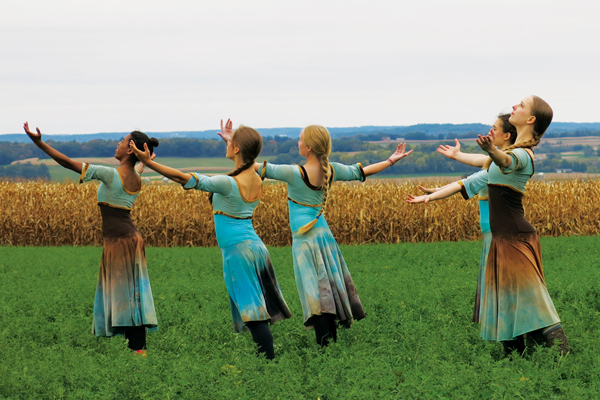
Photo: Wormfarm Institute
Wormfarm Institute-Farm/Art D'Tour
The Farm/Art DTour, presented by the Wormfarm Institute of Reedsburg, WI, is a 50-mile self-guided drive through the scenic working farm lands of Reedsburg and Sauk County, Wisconsin, punctuated with temporary art installations, roadside poetry, pasture performances and more. It is a central component of the Fermentation Fest - A Live Culture Convergence, an annual 10 day event celebrating ‘live culture’ in all its forms - from dance to yogurt, from poetry to sauerkraut. Both events take place during the first ten days of October each year. Through the vision of artists, Wormfarm explores the timeless connections between land and people. This growing annual event has garnered national recognition and funding from national public and private funders, while remaining rooted in the community in which it lives. The DTour winds through scenic working farmland of central Sauk County punctuated by site-responsive art, roadside poetry, local food, pasture performances, and more.Sauk County, in the beautiful driftless area of SW Wisconsin, has a rich agricultural heritage and a strong conservation legacy, and the landscape itself has long been a cultural resource and a locus for community identity. The project serves the local rural community and targets the surrounding 250 mile radius by building on a growing creative economy and local food movement. Wisconsin is proud to call Robert E. Gard one of our own, since he made his home here and did his most important work here. The Farm/Art DTour carries forward and integrates Gard’s “arts for everyone” aesthetic, Wisconsin’s progressive traditions and the Wisconsin Idea (the philosophy that the state’s educational resources should be available and accessible to everyone, everywhere in the state), for the 21st century. Through the DTour and Fermentation Fest, farming, conservation and the arts are brought together in ways that enhance the economic stability of the region, celebrate its unique natural and human history, involve the arts and creativity in thoughtful ways that engage the imagination and deepen an authentic and unique sense of place, and serves as a model for community cultural development in other rural communities in Wisconsin and beyond.
Partners: Lead Partner: Wormfarm Institute. Partners: the farmers and artists of Sauk County. Sauk County land conservation, planning and zoning, Sauk County UW Extension, Reedsburg Area Chamber of Commerce, Wisconsin Farmers Union and the farmers and landowners in eight rural townships of Sauk County
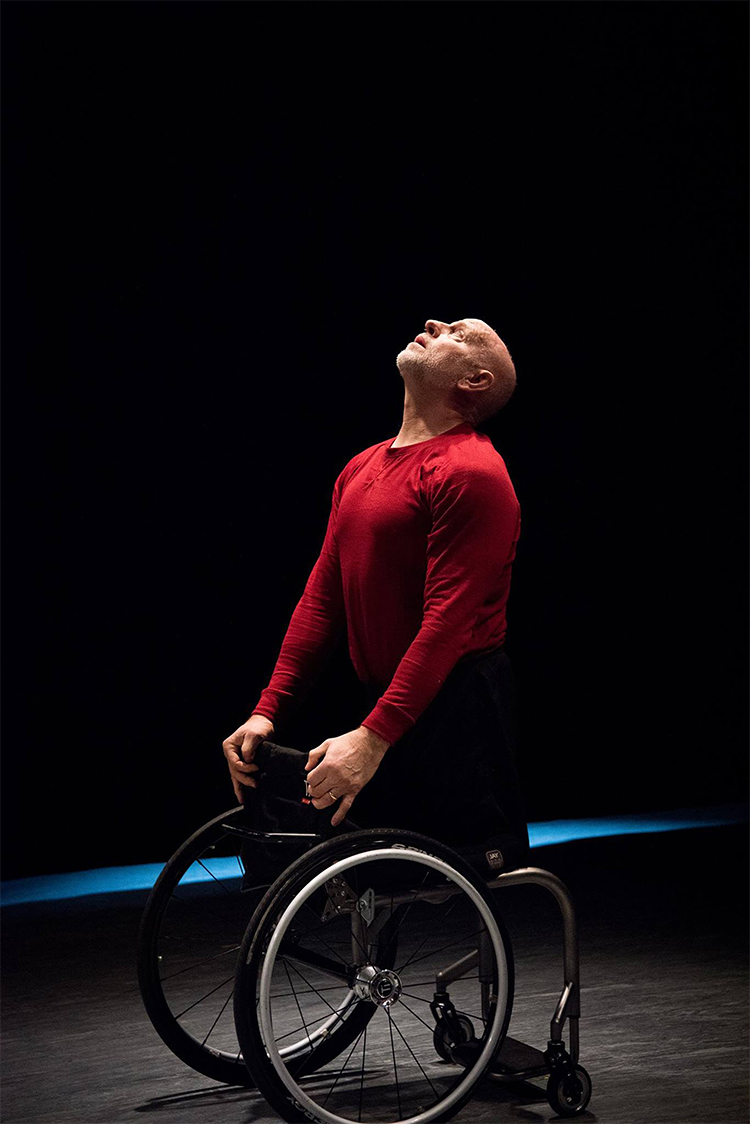
Kris Lenzo performs The Journeyman, a piece created with choreographer Sarah Cullen Fuller, during his 3Arts Residency Fellowship in 2017. Credit: Sarah Cullen Fuller
3Arts Residency Fellowships for Artists with Disabilities
Bridging equity, arts, disability culture, and social justice, the 3Arts Fellowships for artists with disabilities are unprecedented, customized professional development residencies implemented in partnership with Bodies of Work and Department of Disability and Human Development at the University of Illinois at Chicago (UIC). The fellowships support the creation of new work during three-month residencies that are designed to increase the conversation around disability culture on campus and citywide. In addition to determining their own artistic goals, fellows may opt to teach master classes, take part in critiques, work in tandem with students and faculty, conduct research, access UIC's tremendous resources, and present their work to audiences in partner venues located across Chicago. The 3Arts Fellowships provide monthly stipends, accommodations, promotion, and mentorship, along with paid teaching opportunities to help artists build momentum in their careers and take their place in mainstream culture. In Chicago, there is increased activity around accommodating audiences with disabilities at cultural institutions and a growing surge of work being done in racial and gender equity to ensure that a spectrum of people who reflect our community are represented. However, there is virtually no consistent pipeline for artists with disabilities to make inroads as professional artists-in Chicago or beyond. That is the gap that we aim to bridge with the 3Arts Fellowships at University of Illinois at Chicago. In 2017, Kris Lenzo, a national champion wheelchair athlete in basketball and track who turned to dance a decade ago, and Matt Bodett, a visual artist, mental health advocate, and teacher whose work conveys his experiences with schizophrenia and presents an alternative view of his condition as a variance of health, as opposed to a mental illness were the inaugural Fellows. Collectively, Kris and Matt were featured in 18 performances that took place at the Poetry Foundation, Steppenwolf Theatre Company, Victory Gardens Theater, Loyola University, the DisArt Festival in Michigan, Momenta Dance Company, and many more partner sites.
Partners: Lead Partner: 3Arts. Partners: Peter McDowell, Peter McDowell Arts Consulting; UIC graduate students; The Dance Department of Loyola University and Professor Sarah Cullen Fuller; Momenta Dance Company; Dr. Carrie Sandahl, Bodies of Work at UIC; other partners noted in the narrative.

Kids enjoying the Rocketship, a sculpture that was once part of the play area of Virginia Ave Park before it was renovated in early 2000s. Image shared by Carla Fantozzi from the Virginia Ave Park Archives. Photographer and year unknown. This image is part of a small sampling featuring some of the cultural resources in our neighborhood captured both by our community volunteers, or shared from the archives of community members. They tell us about the history and current face of the neighborhood featuring important sites like Virginia Ave Park. They represent some of the people and places that have made and continue to make the Pico Neighborhood and Santa Monica a culturally vibrant community.
Culture Mapping 90404
Facilitated by 18th Street Arts Center, Culture Mapping 90404 is a community produced map highlighting the history and cultural assets of the Pico neighborhood of Santa Monica. Cultural assets are people, places, events and organizations, past and present, that serve as cultural anchors within a community. Our Pico Neighborhood has the highest concentration of publicly assisted housing in the city, with 39% of the residents living on $30,000 or less. The cultural asset map is a research–based approach to engaging our neighbors. By bringing these assets to light, in one place on a public website, we are helping our neighborhood recognize the collective depth of its cultural resources.The creation of the map, a robust public website with oral histories and videos, has been an incredible community bonding experience. 18SAC trained 30+ citizen mappers over one year, who have identified more than 150 assets. The website CultureMapping90404.org is in Spanish and English. The map has been so successful that the City’s Planning Department will use it as they begin a new Neighborhood Specific Plan for the Pico Neighborhood this year, which City Council listed as their number one priority in 2018 due to intense gentrification pressures. 18SAC’s community-sourced Cultural Asset Map and attendant public programming are part of a solution to anchor this neighborhood in flux. We formed a local advisory council with neighborhood leaders, developed ongoing public programming, completed documentation of 60 identified assets, offered 8 free map-training workshops, produced 6-8 artist-led commissions in response to the map stories, and hosted 2 free art festivals. The festival series, called Pico Block Party, is a day of live music, performances, open art studios, artist workshops, and community tables and booths which attracts 600-800 neighbors to our campus, placing 18SAC as a gathering place for the public to celebrate local culture and experience artists from around the globe.
Partners: Lead Partner: 18th Street Arts Center. Partners: 18SAC; the Alliance of California Traditional Arts; Otis College of Art and Design; City of Santa Monica; University of Southern California’s Spatial Analysis Lab (SLAB) students; Santa Monica Public Library; members of Community Corps of Santa Monica.
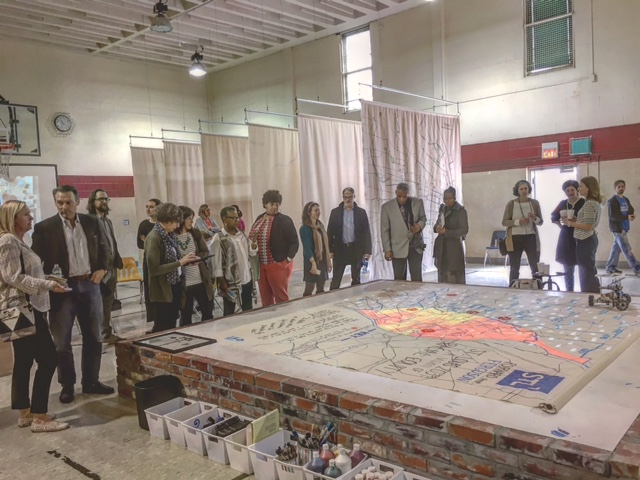
Map Room visitors view one of the community-created maps while discussing how the projected data overlay interplays with the map. Visitors were able to select any of the created maps to explore them on the platform with the projected data.
The St. Louis Map Room
In 2017, COCA collaborated with Data Artist, Jer Thorp and the Office for Creative Research (New York, NY) to create and implement the St. Louis Map Room. Open from March 3 to April 9, 2017, the Map Room was a first-of-its-kind endeavor: a community space for residents to explore and create original, interpretive maps of the region that reflected their personal stories and lived experiences. Students, activists, historians, artists, public servants, and more, convened to make large-scale maps that expressed their narrative in St. Louis. The Map Room was free and open to the public, and visitors were invited to explore present and historic civic data using maps as instruments. Interactive projections allowed participants to overlay community maps with census data, historic city-planning maps, live policing data, and more, to help guests understand how the community has been shaped by acts of mapping. 478 visitors, including 33 groups, visited the Map Room.The St. Louis Map Room has had a serious impact on COCA and the larger community. The Map Room gave participants the opportunity to think critically about their personal narrative in relation to the region as a whole, and address the potential gaps in their knowledge, their programming and their experiences. Participants expressed their satisfaction with the Map Room process and of the discoveries they made while creating their maps. Guests were also able to view created maps and gain a greater understanding of the various perspectives that make up our region. While the St. Louis Map Room came to a conclusion on April 9th, the lessons learned during this pilot program will serve to inform the future iterations of the project in different cities across the world. COCA’s pilot site provided the knowledge base to create a toolkit for future cities to resource in order to implement their own Map Room Projects. Since the completion of the program, many community partners have requested their maps, and now 10-12 maps are on display across St. Louis, including on-site at COCA.
Partners: Lead Partner: COCA - Center of Creative Arts. Partners: St. Louis Public Schools; Jer Thorp, former director of the Office for Creative Research; Missouri History Museum. Map-making organizations: COCA; Brittany Woods Middle School; Carr Lane Middle School; Northwest Academy of Law; Soulard School; SLPS Curriculum Development Department; University City High School; Anti-Defamation League; Community Young Artists; Craft Alliance Crafting-A-Future; Diversity Awareness Partnership; Downtown Dutchtown Business Association; Gateway Greening; Goodmap; Gravois-Jefferson Historic Neighborhood Steering Committee; Missouri History Museum; Outpour Church; Queer Community Group; Regional Arts Commission - Community Artists Training (Alumni); St. Louis Area Foodbank; St. Louis Children's Hospital; STL Transplants; Team TIF; Trailnet; Wells Fargo African American Affinity Group; Winter Outreach (Homeless Coalition); COCA Board; Christner Architects; Washington University Ethnography (Class).
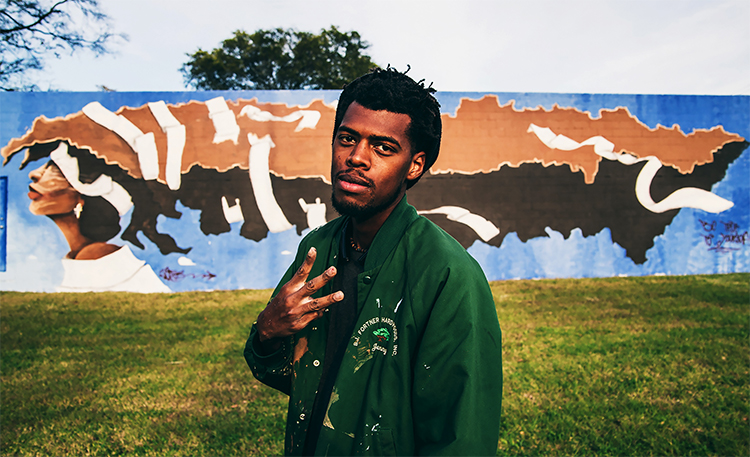
Jay Jenkins (woke3) at the inaugural Norf Walls Fest. Jay and his collective (Norf.) through a THRIVE investment initiated the first street art festival in Nashville along the HBCU/Jefferson Street Corridor. In the interim 3 years, Norf and its artists have received 4 additional THRIVE investments, numerous private commissions. They've relaunched the Jefferson Street Art Crawl and as a group of young, male black artists are driving neighborhood-centric discussions on affordable housing, gentrification, wages and racism. Jay was in the first class of our Learning Lab/civic training program as was Lexander Bryant, another member of the collective. This shows, the deep way that investments in artists and artist movements that are unique to neighborhood context really drive community change. THRIVE is a way to be in alliance with leaders who seek to make long term change, not a means to write a check for a project. Norf Walls was initially funded in 2016, but continues as a recurrent happening because the initial funding served as a catalyst for larger community transformation led and now funded by the artists themselves.
THRIVE
THRIVE is an artist microfund program that invests in local artists who co-create festivals, performances, exhibits, and temporary placemaking with neighborhoods and residents. THRIVE was created to support an equity gap in our local arts agency's funding portfolio. We found many neighborhoods and ALAANA communities were not supported directly through our grant program. Therefore, Metro Arts sought a new way to invest in those artists and culture leaders who are activating neighborhoods and lifting up vital cultural stories outside of institutions and outside the white/hetero normative cultural space. Through THRIVE, we hire artists as vendors and support their creative practices through direct project funding, coaching, and technical assistance. Funded projects have included a street art festival, summer youth residency program, community storytelling nights, podcasts related to GLBTQI experience, original bluegrass compositions, temporary installations about the school to prison pipeline and a new hijab only ballet project. Since 2015, THRIVE has reached 10,000 Nashvillians and employed more than 535 local artists, 54% who self-identify as ALAANA. Projects have reached every zip code and 45 distinct neighborhoods through hundreds of partnerships with faith institutions, galleries, retail, public housing and cultural agencies. Our original intent with THRIVE was to address a structural inequity in our funding system. However, as we implemented the program over time, it became clear that THRIVE supports deeper personal and community outcomes. The vast majority of artists hired are first time recipients of public funding. Our application is short and easy. We accept handwritten and non-English applications. Applicants submit a draft and works with staff in a coaching session on project scope, budget, and neighborhood engagement so their proposal has a higher chance of being funded. As a result, many recipients have subsequently been funded in our traditional grant and public art programs. THRIVE has helped us document the important sharing economy that exists between artists. Over and over our $4000 investment in one person, results in the artist hiring peers, project managers or vendors to support their project. We believe this structure reinforces pay equity and also supports how true placekeeping happens within neighborhoods.
Partners: Lead Partner: Metro Arts Nashville Office of Arts + Culture. Partners: Lauren Fitzgerald, MetroArts neighborhood and artist development coordinator; communities, coffee shops, maker spaces, house of worship and dives; artists and community partners.





